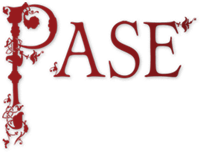Table of Contents
Top of page
Name
Summary
Distribution Map
Property List
Profile
Bibliography
Bottom of page
Lithsmann 2
Lithsmann ‘of Melksham’ (Wilts.), fl. 1066x1086
Male
DWP
4 of 5
Name
Summary
Lithsmann 2 held an estate in west Wiltshire TRE assessed at 3 hides; he survived the Conquest and retained his estate in 1086, when it had a value of 30s and by which time he was a king’s thegn.Distribution map of property and lordships associated with this name in DB
List of property and lordships associated with this name in DB
Holder 1066
| Shire | Phil. ref. | Vill | DB Spelling | Holder 1066 | Lord 1066 | Tenant-in-Chief 1086 | 1086 Subtenant | Fiscal Value | 1066 Value | 1086 Value | Conf. | Show on Map |
|---|---|---|---|---|---|---|---|---|---|---|---|---|
| Wiltshire | 67,89 | Melksham | Liseman | Lithsmann 'of Melksham' | - | Lithsmann, king's thegn | - | 3.00 | 1.50 | 1.50 | A | Map |
| Totals | ||||||||||||
Tenant-in-Chief 1086 demesne estates (no subtenants)
| Shire | Phil. ref. | Vill | DB Spelling | Holder 1066 | Lord 1066 | Tenant-in-Chief 1086 | 1086 Subtenant | Fiscal Value | 1066 Value | 1086 Value | Conf. | Show on Map |
|---|---|---|---|---|---|---|---|---|---|---|---|---|
| Wiltshire | 67,89 | Melksham | Liseman | Lithsmann 'of Melksham' | - | Lithsmann, king's thegn | - | 3.00 | 1.50 | 1.50 | A | Map |
| Totals | ||||||||||||
Profile
It is not clear if Lithsmann 2’s estate was simply in Melksham Hundred or was in Melksham itself, on the River Avon in west Wiltshire. Jones suggested that Lithmann’s hides were at Poulshot, about 5 miles to the south-east of Melksham (Jones 1865: 224), but the basis for this suggestion is unclear (Pugh and Crittall 1953: 96-8).Lithsmann 2 survived the Conquest and was able to retain his estate. DB enters the details in the chapter dealing with the king’s thegns in Wiltshire, which implies that was by then regarded as a king’s thegn but need not mean that he had the same status TRE.
In 1086 Lithsmann’s estate was practising a mix of pastoral and arable agriculture, with 10 acres of pasture and 5 acres of meadow alongside land estimated as sufficient for 2½ ploughs as well as 5 acres of woodland. The demesne assessment for his estate is recorded in all three versions of Exon geld accounts for Wiltshire, where its extent is given as 2 hides (Pugh and Crittall 1955: 193-4). On this demesne he had one plough, while his dependent peasant households (those of 4 villans, 3 bordars and 3 cottars) had another plough on the remaining hide.
Bibliography
Jones 1865: Domesday for Wiltshire, ed. W. H. Jones (London and Bath, 1865)
Pugh and Crittall 1953: A History of the County of Wiltshire: Volume 7, ed. R. B. Pugh and E. Crittall (London, 1953)
Pugh and Crittall 1955: A History of Wiltshire: Volume 2, ed. R. B. Pugh and E. Crittall (London, 1955)
